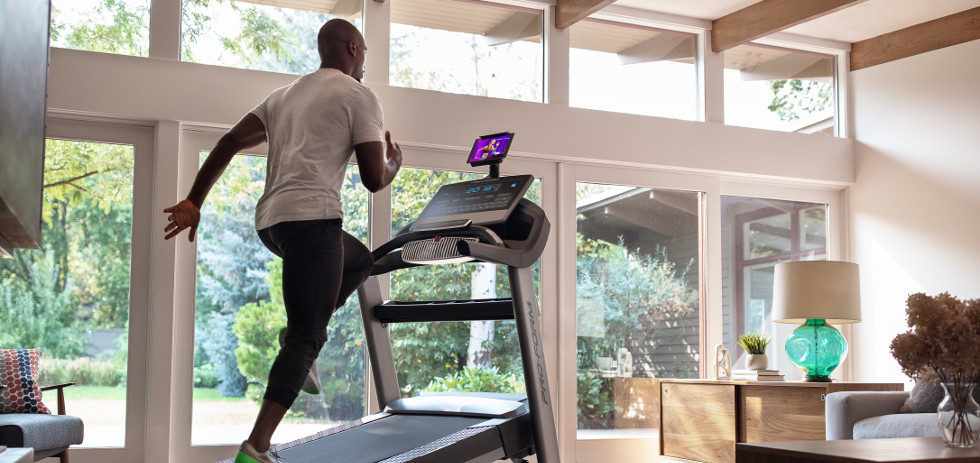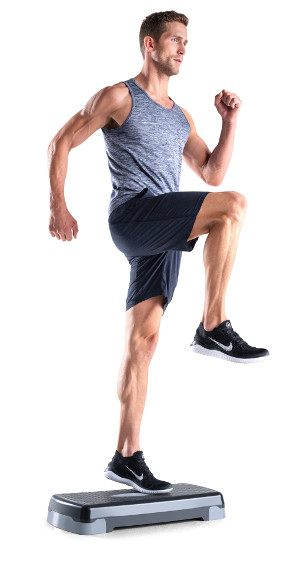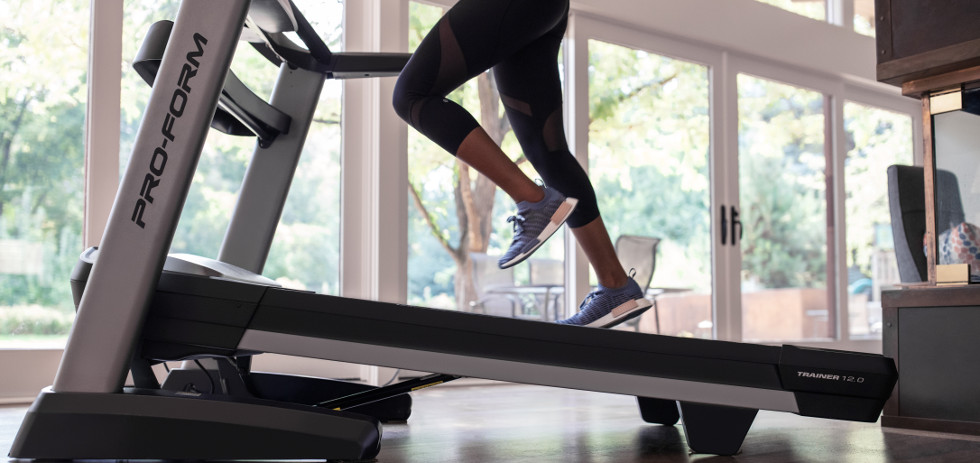Easy Plyometric Exercises For Beginners

Do you want explosive power in the gym or during the game? Try plyometrics!
Plyometric exercise, also known as plyos or “jump training,” is a highly effective form of power training. These explosive power exercises that encourage muscle development, endurance, speed agility, and quickness.
Athletes from the Soviet Union made plyometrics famous in the 1970’s. American athlete Fred Wilt coined the term “plyometrics” after watching the Soviet athletes prepare for track and field events. He watched as the athletes would jump down from a safe height and then jump forward. The landing and takeoff occur within a fraction of a second of each other. Wilt saw that the motion of landing then springing helped the Soviet athletes execute athletic moves in an extremely quick and explosive manner.
Plyometrics works by taking advantage of the force produced by muscle contractions as the muscles shorten and lengthen. Most people know that muscles produce force when they shorten, but they also produce force as they lengthen.
There are two types of contractions:
Eccentric contractions – when muscles get longer but still produce force, like when you lower a weight back down during a biceps curl.
Concentric contractions – when muscles get shorter but still produce force, like when you pull the weight back up during a biceps curl.
In jumping exercises, the muscles lengthen during the force of landing to cause eccentric contraction, and then the muscles shorten during the jumping motion to cause eccentric contraction. Some refer to this as the “stretch-shortening cycle.” Plyometrics concentrates on keeping a short stretch – shortening cycle execution time between landing and jumping.
Plyometrics are basically any exercise that involves jumping, skipping, hopping, jumping rope, lunges, jump squats, bounding, and clap push-ups are all types of plyometric exercises. Many sports, such as basketball, volleyball, tennis, badminton, and squash, use plyometric moves as part of game play. Even sports that do not generally involve a great deal of jumping, such as football, include some explosive plyometric maneuvers.
Plyometrics Improve Overall Fitness Performance
Plyometric exercises increase the speed and force of muscle contractions in ways that affect the elasticity and strength of muscle tissue. Increasing speed and force of muscle contractions in this way produces fast, powerful movements essential for a number of sports.
Plyometrics strengthen your muscle tissue and train your nerves to produce optimal muscle contractions in specific groups of muscles.
Muscular strength and muscular power are two different things. Muscular power is the time it takes to convert muscular strength into speed. A short, fast muscle contraction produces higher energy than a slower, more powerful contraction. Plyometrics increase muscular power by rapidly transforming muscular strength into speed, which helps you perform movements you could not do with strength alone.
Engaging in plyometric exercise in sport-specific improves your ability to apply more force, more rapidly when you play your sport by mimicking the patterns of movement specific to your sport. The ability to generate maximum force in this way during training provides sport-specific power in sports, such as soccer, tennis, martial arts, and basketball. Plyometrics help you run faster, throw farther, hit harder, and react quicker.
Plyometric exercises repeatedly stimulate the elasticity of muscles, using movements that mimic the movements you use in your favorite sports. The stretch – shortening cycle of plyometrics transforms maximal strength into quick, powerful, and explosive movements. These movements train your body to apply a set amount of force in the shortest amount of time.
In other words, plyometric exercises convert maximal strength into fast, powerful and explosive movements when you perform.
Safety Guidelines For Plyometrics
Safety always comes first, especially when it comes to training for fast, explosive movements. Plyometrics is not for weekend warriors, exercise newbies, or individuals recovering from injuries. Plyometric exercises can bring real workout value to healthy athletes and people with some experience in the gym.
If you are new to plyometrics, focus on performing plyometric exercises for beginners to optimize performance and reduce the risk of injury. Perform plyometric exercises on a soft surface, such as a rubber mat, carpet, or grass.
Perform just three or four plyometric moves at the start of the workout, after a proper warm up and a 15 – 20 minute stretch. Do two to three sets in all, with three to five repetitions (reps) per set. Do plyometrics two to three times per week, taking a 48 to 72 hour break in between sessions.
Athletes who weigh more than 240 pounds should use only low intensity and low volume plyometrics drills and use them with caution.
All athletes should use proper form, be free from injury, and perform plyometrics only under supervision. Athletes should use plyometrics only after receiving proper instructions on using the techniques.
If you are a beginner, perform the movements slowly at first. Build speed after you have developed proper form. Landing surfaces should be free from clutter, and stop immediately if you feel pain.
Easy Plyometric Exercises For Beginners
Plyo Push-Ups
Perform regular pushups, but pushing up with enough force to bring both hands up off the ground and clap together before landing. Beginners should start by performing modified push-ups, in which they kneel while doing push-ups.
Long Jump
Stand with feet hip-width apart, crouch into a squatting position with your arms back, and then spring forward with both of your feet together.
Tuck Jump
Stand with your feet shoulder-width apart, knees slightly bent, as if you were about to squat. Next, spring up into the highest jump possible and bring your knees to your chest. Land softly on your toes.
Doing Plyometrics On Your Treadmill
Your treadmill is an important tool in performing plyometric exercises. You can use your treadmill alone to perform explosive exercises or as part of a comprehensive plyometric workout.
Use plyometrics on your treadmill to improve your speed. Set your treadmill to 75 percent of your maximum speed. Sprint for 5 to 10 seconds and then rest for 20 to 30 seconds. Repeat for a specified number of reps. Add 0.5 to 1 mph between sets for maximum effect.
Increase your stride length and force your legs to put more power in the ground by setting your treadmill on an incline. Set your treadmill to 75 percent max speed at a 1 percent incline and jog for 1 to 2 minutes. Increase the incline to 6 to 7 percent and adjust your speed to 75 to 80 percent maximum, and run for ¾ of a mile run. Decrease the incline to 1 or 2 percent and jog for one to two minutes. Then increase the incline to 8 percent and bring speed up to 85 to 90 percent for a ½ mile run.
Decrease the incline to 1 or 2 percent for a 1 to 2 minute jog before increasing the incline all the way up to 10 to 12 percent and speed to 100 percent maximum for a quarter mile run. Decrease the incline back down to 1 or 2 percent and jog for a couple of minutes.
Use your treadmill along with other plyometric exercises. Start by going for a 2-minute intermediate-speed jog, push at a higher speed for 30 seconds, and then perform one minute of plyometric exercises.
Plyometric exercises may drastically improve your fitness – taking your performance to a whole new level.
DISCLAIMER: This post is not intended to replace the advice of a medical professional. The above information should not be used to diagnose, treat, or prevent any disease or medical condition. Please consult your doctor before making any changes to your diet, sleep methods, daily activity, or fitness routine. ProForm assumes no responsibility for any personal injury or damage sustained by any recommendations, opinions, or advice given in this article.
Sources:
https://www.proform.com/blog/plyometrics-exercises/
https://www.ncbi.nlm.nih.gov/pmc/articles/PMC5260592/
https://www.youtube.com/watch?v=FRo3b_Pfw3M
https://www.youtube.com/watch?v=RTTz6RXwDcE










